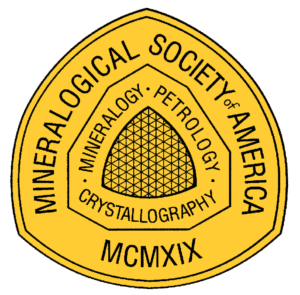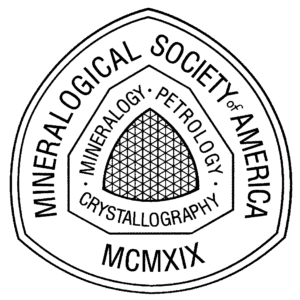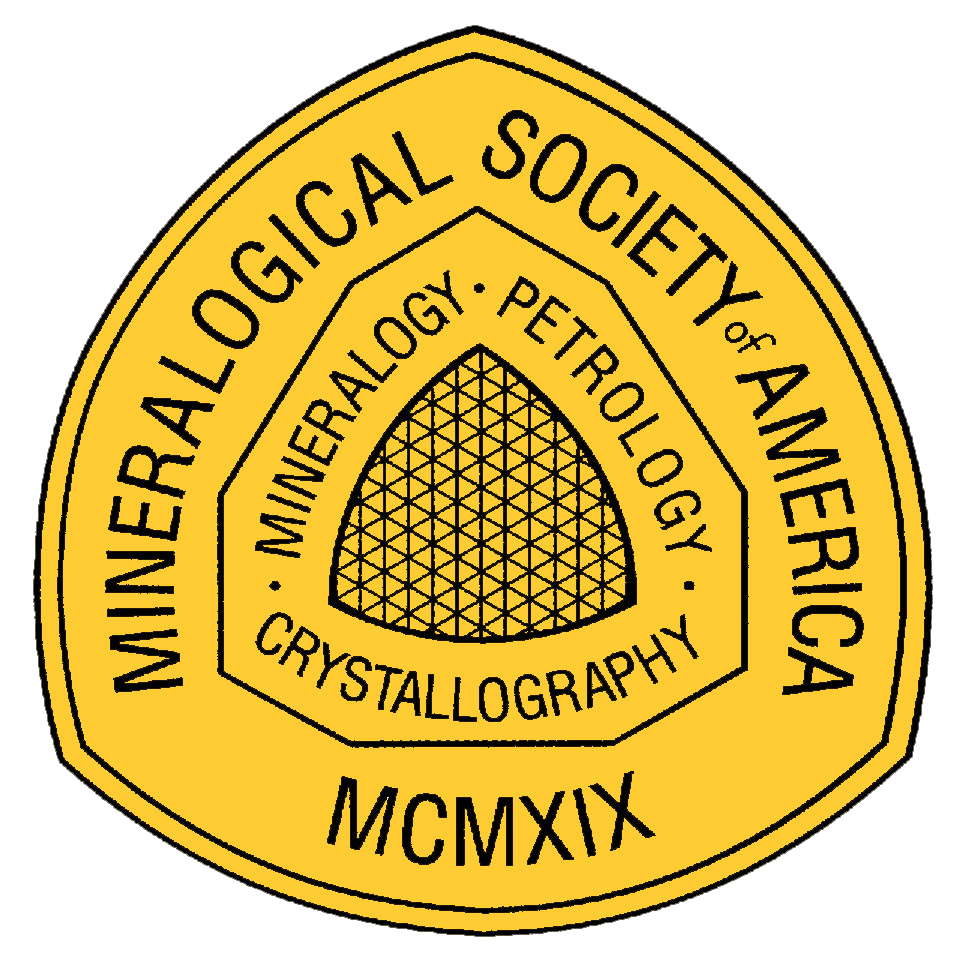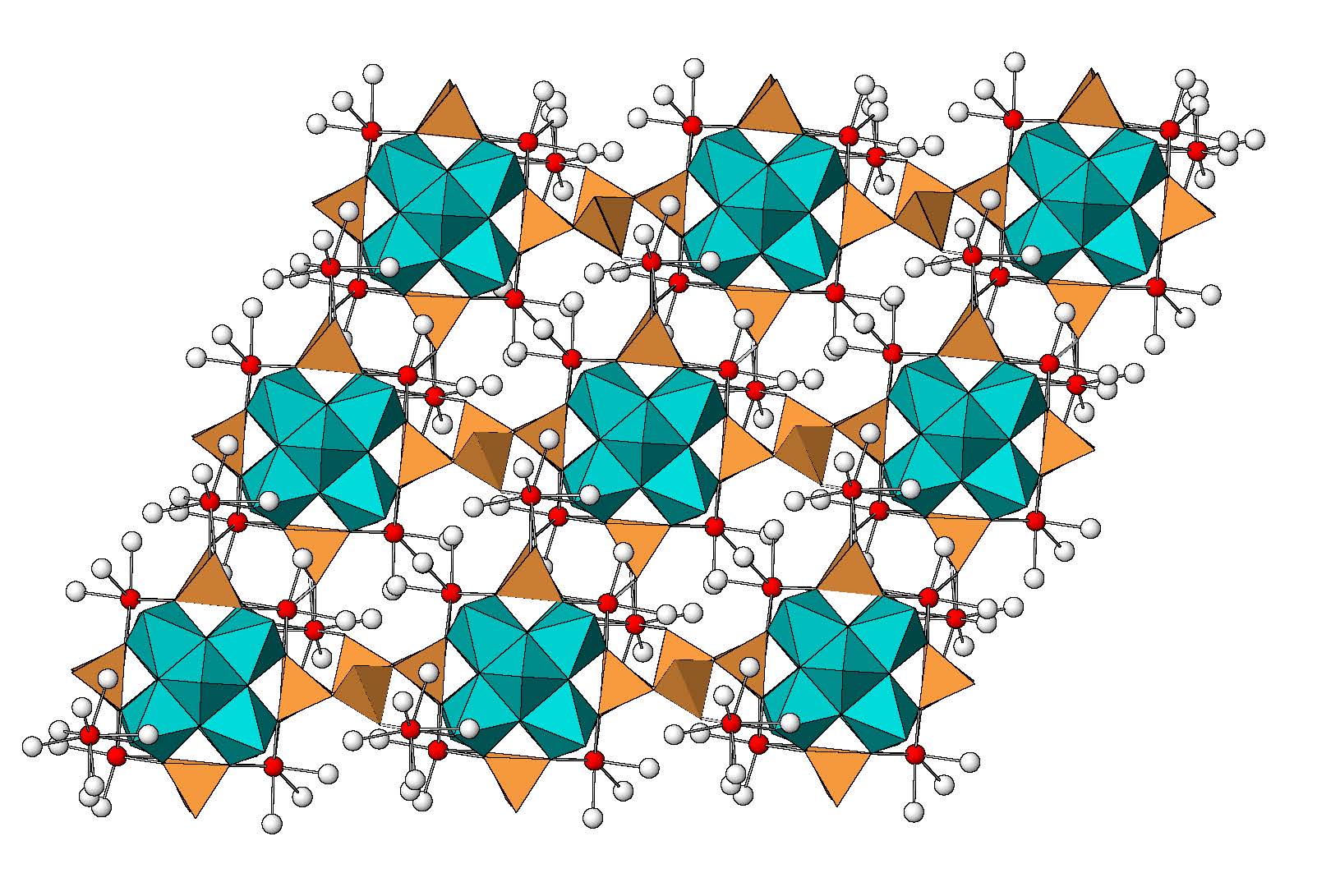
Editor’s Notes

Total Results: 1376
Volume 109 : May 2024 Issue
Characterizing basalt-atmosphere interactions on Venus: A review of thermodynamic and experimental result
https://doi.org/10.2138/am-2023-9015
The surface of Venus is in contact with a hot (~470 °C), high pressure (92 bars), and caustic (CO2 with S, but little H2O) atmosphere, which should cause progressive alteration of the crust in the form of sulfate and iron-oxide coatings; however, the exact rate of alteration and mineral species are not well constrained. Filiberto and McCanta review recent geochemical modeling and experimental studies to constrain the state of the art for alteration mineralogy, rate of alteration, open questions about the surface mineralogy of Venus, and what can be constrained before the fleet of missions arrive later this decade. Combining the new results confirm that basalt on the surface of Venus should react quickly and form coatings of sulfates and iron-oxides; however, the mineralogy and rate of alteration is dependent on physical properties of the protolith (including bulk composition, mineralogy, and crystallinity), as well as atmospheric composition, and surface temperature. Importantly, the geochemical modeling shows that the mineralogy is largely controlled by atmospheric oxygen fugacity, which is not well constrained for the near surface environment on Venus. Therefore, alteration experiments run over a range of oxygen and sulfur fugacities are needed across a wide range of Venus analog materials with varying mineralogy and crystallinity.
Using pyrite composition to track the multi-stage fluids superimposed on a porphyry Cu system
https://doi.org/10.2138/am-2022-8727
Wu et al. studied porphyry-type alteration, and widespread late Cu sulfide-bearing veins (stage IV) crosscutting porphyry-type alteration, plus a post-ore fault-controlled argillic alteration (stage V) in the Yulekenhalasu porphyry Cu deposit. Anomalous concentrations of trace elements in pyrite of different stages are clarified. The spatial variation of Se/S in pyrite were influenced by changes in the hydrothermal fluid composition and temperature, which may provide a potential vectoring tool to mineralization for pyrite geochemistry in porphyry deposits.
Geochemical discrimination of pyrite in diverse ore deposit types through statistical analysis and machine learning techniques
https://doi.org/10.2138/am-2023-8976
Li et al. used data on pyrite from iron oxide-apatite, iron oxide copper-gold, skarn Cu-(Fe), porphyry Cu-Mo, orogenic Au, volcanic-hosted massive sulfide, sedimentary exhalative deposits and barren sedimentary rocks for the application of machine learning techniques and construction of optimized discrimination diagrams. The calculated discriminant functions highlight distinct multi-element differences among pyrite from various types of deposit. Among the three machine learning algorithms, i.e., Artificial Neural Network, Support Vector Machine, and Random Forest, the accuracy demonstrates that pyrite trace element data combined with Support Vector Machine is a useful tool to discriminate between ore types.
Correlation between Si-Al disorder and hydrogen-bonding distance variation in ussingite (Na2AlSi3O8OH) revealed by one- and two-dimensional multi-nuclear NMR and first-principles calculation
https://doi.org/10.2138/am-2023-9008
Cation order/disorder (Si-Al in particular in silicates) and the strength of hydrogen bonding of OH groups are two structural factors that may significantly affect the stability and physical properties of minerals and inorganic materials. Not much attention has been paid to the correlation of the two factors. In this study, Xue and Kanzaki focused on the mineral ussingite, (Na2AlSi3O8OH), which is characterized by a unique interrupted framework structure and strong hydrogen bonding. Despite several previous studies of the mineral using single-crystal X-ray and neutron diffraction and 1H and 29Si NMR, the state of Si-Al disorder and how it affects the hydrogen bonding was uncertain. They were able to unambiguously clarify the issue via a comprehensive one- and two-dimensional multi-nuclear NMR and first-principles calculation. This powerful approach not only allowed the authors to unambiguously confirm the existence of ~3% Si-Al disorder, but also to clearly reveal its spatial relationship with OH sites that undergo large changes in hydrogen bonding distances. Correlation between Si-Al disorder with variation in hydrogen-bonding distance could be a universal phenomenon also applicable to other hydrous minerals that are indispensable to the understanding of water storage in the deep Earth and planetary interiors. This study also confirmed that Al prefers to partition into more polymerized structural units [Q4 = tetrahedral TO4 sites that share all four of its oxygen corners with other tetrahedral neighbors, rather than Q3 for which one oxygen is not shared with other tetrahedra, i.e., nonbridging oxygen (NBO)] to avoid the formation of Al-OH and Al-NBO, and provides insight into their behavior in partially depolymerized aluminosilicate melts/glasses and minerals.
Single-crystal X-ray diffraction on the structure of (Al,Fe)-bearing bridgmanite in the lower mantle
https://doi.org/10.2138/am-2023-8969
Fu et al. report high-quality structural refinements on single-crystal (Al,Fe)-bearing bridgmanite up to 64.6 GPa at 300 K. Their results show an increasing structural distortion of the sample with pressure, which is related to the A-site Fe2+ distortion. The local environmental changes of A-site Fe2+ in bridgmanite could help explain observed anomalies in some physical properties such as lattice thermal conductivity, which can greatly affect our understanding of the physics and dynamics of planets.
Multi-scale and multi-modal imaging study of mantle xenoliths and petrological implications
https://doi.org/10.2138/am-2022-8866
Venier et al. explored the application of 3D X-ray micro-computed tomography (conventional and synchrotron-based) to mantle xenoliths and the differences between 2D and 3D textural studies. The 3D models obtained allow the extraction of textural information that cannot be fully quantified from thin sections, such as spinel layering, silicic glass distribution and related vesicles. Recommendations are given for future 3D textural studies of mantle xenoliths, and it is shown quantitatively how 2D petrography can underestimate the modal composition of spinel peridotites.
Mineral and crystal chemical study of pseudo-C2/m non-metamict chevkinite-(Ce): An investigation into the intracrystalline distribution of LREE, HREE, and octahedral cations in samples from the Azores and Pakistan
https://doi.org/10.2138/am-2022-8658
X-ray structure refinements and consistent site occupancies data allowed Carbonin et al. to accurately calculate cation distribution in non-metamict chevkinite-(Ce). Crystal chemical studies help better understand the well-known ability of chevkinite to fractionate LREE from HREE and its importance in geochemical modeling (Macdonald and Belkin 2002). This study showed that heavier and smaller REE enter only the 8-coordinate A1 site. At the same time, however, particularly stretched bonds suggest the A1 polyhedron bond lengths are still too long for HREE.
Evolution of layering in a migmatite sample: Implications for the petrogenesis of multidomain monazite and zircon
https://doi.org/10.2138/am-2022-8679
Gneissic layering is common in partially melted rocks. Characterizing layer-forming processes is essential to interpreting the timing of melting and history of metamorphic rocks, especially in multiply deformed regions. Suarez et al. analyzed all layers of a single migmatitic rock to describe the evolution of gneissic layering and the texture and timing of datable minerals (monazite and zircon) developed during biotite dehydration melting. They interpreted the gneissic layers as a result of varying degrees of preservation of products and reactants in the biotite dehydration melting reaction. Notably, the complete tectonic history is preserved in monazite and zircon grains in the partially melted Ògrey gneissÓ layers, but not in the leucosome layers.
Waipouaite, Ca3(V4+4.5V5+0.5)O9[(Si2O5(OH)2][Si3O7.5(OH)1.5]·11H2O, a new polyoxovanadate mineral from the Aranga Quarry, New Zealand
https://doi.org/10.2138/am-2023-9048
Elliott and Kampf present the description of waipouaite from the Aranga Quarry, Northland Region, New Zealand. The new mineral is the first natural polyoxovanadosilicate and has a novel structure, based on [(V4+,V5+)5O17] polyoxovanadate units, which is unique in natural and synthetic phases. The synthesis of polyoxovanadates is a very fast-growing area of research in material chemistry driven by their structural versatility and potential applications that result from the flexible coordination chemistry of vanadium and its wide variety of valence states. Polyoxovanadosilicates have proved to be highly effective for making extended frameworks because of the absence of electron lone pairs, however, little progress has been made in the syntheses of these compounds. The discovery of waipouaite demonstrates that polyoxovanadosilicates can form under natural conditions and may open up new synthetic pathways for the preparation of these compounds.
Scandio-winchite, ideally □(NaCa)(Mg4Sc)(Si8O22)(OH)2: The first Sc-dominant amphibole-supergroup mineral from Jordanów Śląski, Lower Silesia, southwestern Poland
https://doi.org/10.2138/am-2023-8974
Pieczka et al. present scandio-winchite, o(NaCa)(Mg4Sc)(Si8O22)(OH)2, the first Sc-dominant amphibole-supergroup mineral. It was discovered in a contact zone of a granitic pegmatite and rodingite-like, calc-silicate rocks and metasomatized granitic bodies in a serpentinite quarry at Jordan—w _l_ski, Lower Silesia, Poland. Scandio-winchite occurs within chlorite aggregates that probably represent remnants of partly recrystallized xenoliths of blackwall chlorite schists and in adjoining portions of the pegmatite. The authors present crystallochemical and structural data of this new mineral as well as briefly speculate on formation conditions that could favor the crystallization of this amphibole. They consider scandio-winchite as a secondary metasomatic phase related to the evolution of the country rocks and partial alteration of the blackwall chlorite schists induced by the pegmatitic melt and associated fluids.
Znucalite, the only known zinc uranyl carbonate: Its crystal structure and environmental implications
https://doi.org/10.2138/am-2023-8956
Steciuk et al. present the first structure characterization of the zinc uranyl-carbonate mineral znucalite using 3-dimensional electron diffraction and X-ray powder diffraction. Znucalite is the only reported uranyl carbonate containing zinc as an essential constituent. It possesses a layered structure, with [Zn10(OH)14(CO3)2] double sheets connected to a thick interlayer where (UO2)(OH)2(CO3)2 and Ca(H2O)4 present imperfect ordering. A discussion on the environmental importance of znucalite is included, based on geochemical calculations with an estimate of the solubility product for this mineral. The authors document that znucalite could be a relevant agent in removing uranium from groundwater
Influence of crystallographic anisotropy on the electrical conductivity of apatite at high temperatures and high pressures
https://doi.org/10.2138/am-2022-8900
Hu et al. systematically investigated the orientation-related electrical conductivity of apatite single crystals along the [001], [100], and [010] crystallographic orientations at 973-1373 K and 1.0-3.0 GPa. The electrical conductivity shows a strong temperature-dependence, a weak pressure-dependence and a high sensitivity to the crystallographic orientation. The electrical conductivity of apatite single crystals with an extremely high anisotropic degree (T = ~9-16) value is much lower than those ofÊ phlogopite, lawsonite and amphibole at temperatures of 973-1373 K. All of these observations, including the relatively higher activation enthalpy (1.92-2.24 eV) and positive activation volume (9.31±0.98 cm3/mol), confirmed that the monovalent fluorine anion was the main charge carrier for apatite under the studied conditions. Furthermore,Ê the authors established the functional dependence for the volume percentages of apatite on the electrical conductivity of phlogopite-apatite-peridotite rock system.Ê For a given middle Hashin-Shtrikman upper bound model, the electrical conductivity-depth profile for peridotite containing 10.0 vol% apatite was successfully constructed on the basis of two different geothermal gradients for the lower boundary of 11.6 K/km and upper boundary of 27.6 K/km in western Junggar of the Xinjiang autonomous region. Although the presence of apatite in peridotite cannot explain the high conductivity anomalies beneath western Junggar of Xinjiang autonomous region, it can provide a reasonable constraint on those of apatite-rich areas with relativity high resistivity.
Volume 109 : April 2024 Issue
Interfacial interactions controlling adsorption of metal cations on montmorillonite
https://doi.org/10.2138/am-2022-8834
Adsorption is one of the most remarkable properties of montmorillonite. However, our understanding of the interfacial interactions between metal cations and montmorillonite remains elusive, which has limited the insights into the migration, enrichment, and cycling of metals on Earth, and the evolution of montmorillonite itself and the changes of associated soil, and sediments. This paper by Li et al. examines the interfacial interactions for the adsorption of metal cations on montmorillonite and reviews the status on this research.
Microstructural and compositional evolutions during transformation from biotite to berthierine: Implications for phyllosilicate alteration processes
https://doi.org/10.2138/am-2023-8984
Using high-angle annular dark-field scanning transmission electron microscopy (HAADF-STEM), energy-dispersive spectroscopy, and electron energy loss spectroscopy (EELS), Xi et al. identified a berthierine twin structure within weakly changed biotite in a rhyolite from Long Valley, California, USA. The nanoscale Fe-rich layers are composed of twinning berthierine layers rather than a single chlorite layer. The transformation of biotite to berthierine requires the dissolution of a tetrahedral (T) layer and the introduction of a new TO (O represents octahedral sheet) structure into the biotite stacking sequence, resulting in substituting one biotite layer (i.e., TOT) by two twinning berthierine layers (i.e., TO-OT). Morphological observations indicate that the transformation began at the biotite defect locations, concurrent with the rearrangement of metal cations. During the weak fluid reform of biotite, berthierine was produced via an interface-coupled dissolution-reprecipitation process. The EELS analyses further demonstrate that the Fe-rich biotite promotes the production of berthierine as the principal alteration product in low-temperature environments. This study also demonstrates that the combination of HAADF-STEM and EELS is effective for identifying nanominerals and elucidating their formation and alteration mechanisms.
Vapor-phases as Cu transport agents for the shear-zonehosted mineralization system: A perspective from H-O-SCu isotopes
https://doi.org/10.2138/am-2022-8888
Elucidating metal transport agents is the key to understanding the genesis of deposits and tracking the locations of concealed orebodies. Zhao et al. demonstrate that integrating H-O-S-Cu isotopic analyses with geochemical modeling can reveal the vapor phase as the dominant metal transport agent in a metamorphic geological environment. From this perspective, metal precipitations can occur along the shear zone over a long distance because vapor phases can move outwards promptly. Their study provides a framework to track the locations of concealed orebodies for the shear-zone-hosted Cu deposits reliably.
Don Juan Basin, Antarctica: A chemically altering environment with martian analog potential
https://doi.org/10.2138/am-2022-8779
Foerder et al. present a coordinated geochemistry-, spectroscopy-, and mineralogy-based study of sediments from a basin in the McMurdo Dry Valleys of Antarctica with the purpose of investigating the type and degree of alteration occurring in and around a hypersaline and perennially liquid water pond found within. Sediment provenance, surface, and subsurface processes are also considered to provide information on alteration processes occurring in a cold, water-poor, Mars-like setting. The authors connect these geochemical and mineralogical observations to those detected at the martian surface to describe a possible analog setting (and process) for the formation of these ofttimes enigmatic aqueous, chemical alteration products on Mars. This work has important implications for the Hesperian to recent history of chemical alteration processes at and near the martian surface.�
High-pressure polymorphs of ferroan dolomite: Possible host structures for carbon in the lower mantle
https://doi.org/10.2138/am-2022-8737
Martirosyan et al. demonstrate a complex polymorphism of the dolomite-ankerite solid solutions at high pressure and a clear effect of cationic substitution on the phase behavior. Given the significant role of carbonates in the petrological and geochemical processes, such as carbonatitic melt formation, metasomatism, and red-ox reactions, the Dol-IIIc and IIIb polymorphs should be considered in the modeling of the lower mantle processes related to the deep carbon cycle.
Revisiting the genesis of the adakite-like granitoids in collisional zones: Water-fluxed melting of intermediate to felsic rocks with dilution by low Sr/Y phases
https://doi.org/10.2138/am-2022-8873
Xie et al. investigated the origin of adakitic plutonic rocks through geochemical and textural characterization of rock-forming minerals in the orthopyroxene-bearing, Zhuyuan granodiorite (West Qinling, China). The study proposes that high Sr/Y signal is primarily controlled by the late-stage orthocryst assemblages (non-sieve textured plagioclase+ biotite + K-feldspar + quartz). The addition of low Sr/Y non-orthocrysts and associated melt may have diluted the primary �adakitic signal� in the magma reservoir, driving the bulk composition to more mafic values. The study also highlights that the high Sr/Y signal, which can be formed under various pressure conditions, is often controlled by source compositions. In this regard, many high Sr/Y adakitic granites cannot be directly used to infer the thickness of the continental crust when the source is a felsic to intermediate protolith melted under water-fluxed conditions.
Pressure-induced phase transitions in Ni-bearing ferrosilite (Ni-En31Fs65)
https://doi.org/10.2138/am-2022-8879
Metastable orthopyroxene is considered to be related to the stagnation of slabs due to its low density compared with other major slab minerals. Xu et al. observed three metastable phase transitions in Ni-bearing ferrosilite (Ni-En31Fs65) at 12.1(6) GPa, 15.6(6) GPa, and 31.3(25) GPa. This study revealed the possible phase transition path of Fe-rich orthopyroxene in extremely cold subducting slabs in the deep Earth: _-opx (Pbca) _ _-opx (P21/c)� _ _-opx (Pbca)� _ _-popx (P21ca).
Thermoelastic properties of non-metamict zircon
https://doi.org/10.2138/am-2023-8986
M�nchhalfen and Schreuer determined the thermoelastic properties and thermal expansion of natural single-crystal zircon without detectable radiation damage were in the temperature range between 100 K and 1650 K on five samples from Cambodia, Sri Lanka, and Tanzania. Their results are highly reproducible, allowing for a reliable extrapolation to 0 K. Previously unknown irreversible elastic effects were observed in the high-temperature range above 1500 K.
1 2 3 … 69 › »
American Mineralogist offers many special themed article collections virtually. Articles that fall within the Special collection are published exactly as any other paper. Special collection papers are identified by headings.

Access is free to the Articles in the American Mineralogist from 1916 to 1999. Articles published in 2000-Present are restricted to Subscribers and Members.


